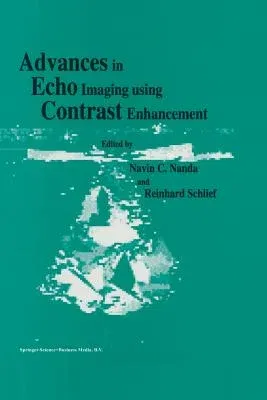The opacification of the left ventricle by echo cardiographic contrast
agents (echoventriculography) represents an alternative to
cineventriculography, as determinations of left ventricular volume and
ejection fraction are accurate and highly reproducible, when methods
like color superposition and statist- ical imaging techniques are used
in order to improve the outlining of the cavity and endocardial border.
Detection of perfusion defects is possible [40]. The enhancement of
myocardial contrast during the perfusion phase after injection into the
left ventricle or the aorta further improves the endo- cardial border
delineation. For practical purposes, the direct injection of
echocardiographic contrast is inferior to the indirect opacification
after per- ipheral venous injection which can be achieved with sonicated
albumin, Albunex(R), SH U 508 A, HOE 155. These drugs are presently
under clinical investigation. In up to 90% of the patients, left heart
opacification is possible, yielding 30% intensity of the right
ventricle. When these drugs are available, sophisticated computed
methodologies have to be included in the echocardio- graphic machines in
order to improve the determination of the left ventricular volume and
ejection fraction [44]. In the future, cineventriculography will be
rarely performed as echoventriculograms already show left ventricular
contraction. This will possibly result in reduced side effects and
costs. REFERENCES 1. Gramiak R, Shah PM, Kramer DH. Ultrasound
cardiography: Contrast studies in anatomy and function. Radiology 1969;
939. 2. Kronik G, Hutterer B, Mosslacher H. Diagnose atrialer
Links-rechts-Shunts mit Hilfe der zweidimensionalen
Kontrastechokardiographie. Z Kardiol 1981;70:138-45.

